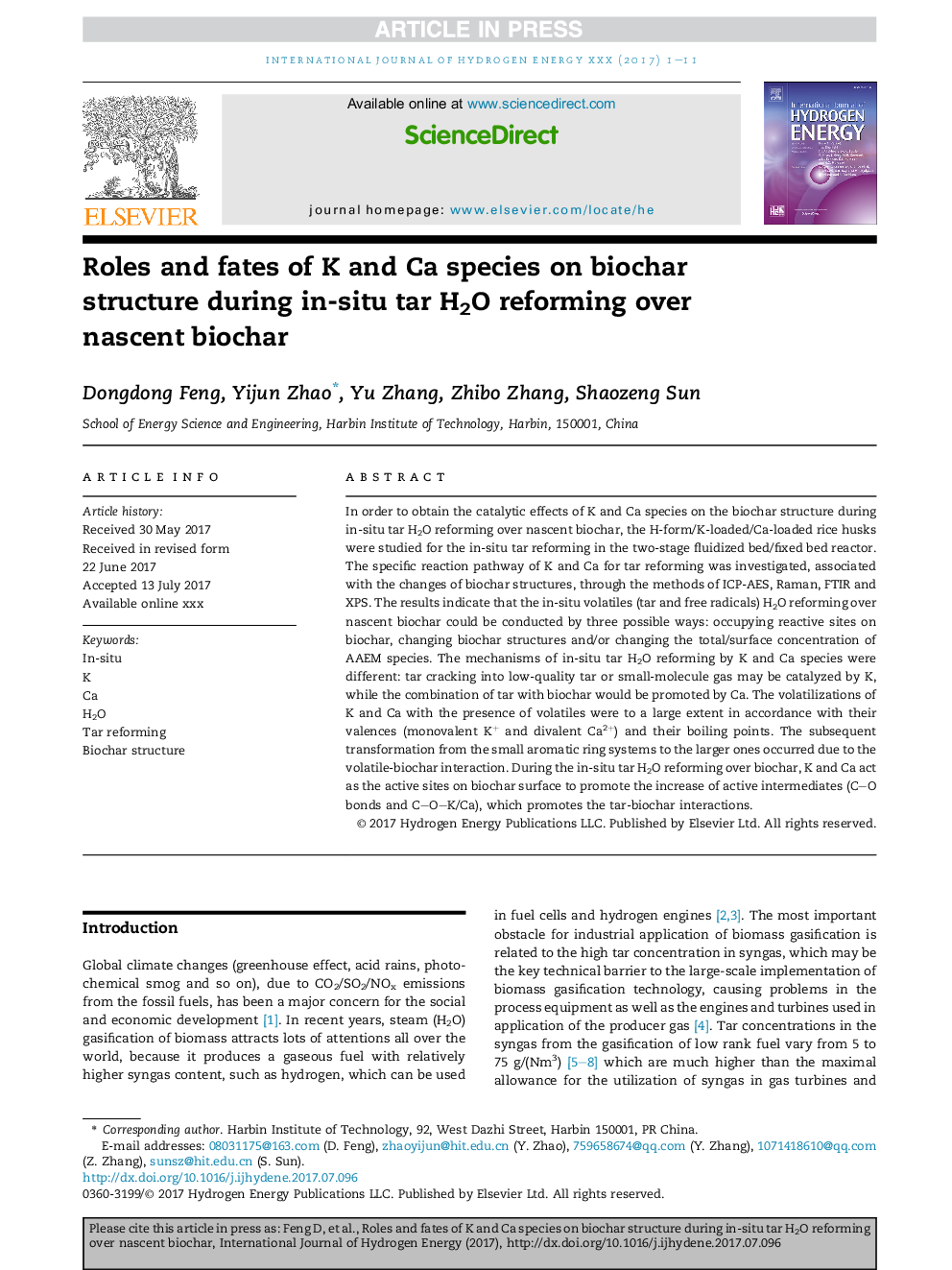| Article ID | Journal | Published Year | Pages | File Type |
|---|---|---|---|---|
| 5145884 | International Journal of Hydrogen Energy | 2017 | 11 Pages |
Abstract
In order to obtain the catalytic effects of K and Ca species on the biochar structure during in-situ tar H2O reforming over nascent biochar, the H-form/K-loaded/Ca-loaded rice husks were studied for the in-situ tar reforming in the two-stage fluidized bed/fixed bed reactor. The specific reaction pathway of K and Ca for tar reforming was investigated, associated with the changes of biochar structures, through the methods of ICP-AES, Raman, FTIR and XPS. The results indicate that the in-situ volatiles (tar and free radicals) H2O reforming over nascent biochar could be conducted by three possible ways: occupying reactive sites on biochar, changing biochar structures and/or changing the total/surface concentration of AAEM species. The mechanisms of in-situ tar H2O reforming by K and Ca species were different: tar cracking into low-quality tar or small-molecule gas may be catalyzed by K, while the combination of tar with biochar would be promoted by Ca. The volatilizations of K and Ca with the presence of volatiles were to a large extent in accordance with their valences (monovalent K+ and divalent Ca2+) and their boiling points. The subsequent transformation from the small aromatic ring systems to the larger ones occurred due to the volatile-biochar interaction. During the in-situ tar H2O reforming over biochar, K and Ca act as the active sites on biochar surface to promote the increase of active intermediates (CO bonds and COK/Ca), which promotes the tar-biochar interactions.
Keywords
Related Topics
Physical Sciences and Engineering
Chemistry
Electrochemistry
Authors
Dongdong Feng, Yijun Zhao, Yu Zhang, Zhibo Zhang, Shaozeng Sun,
